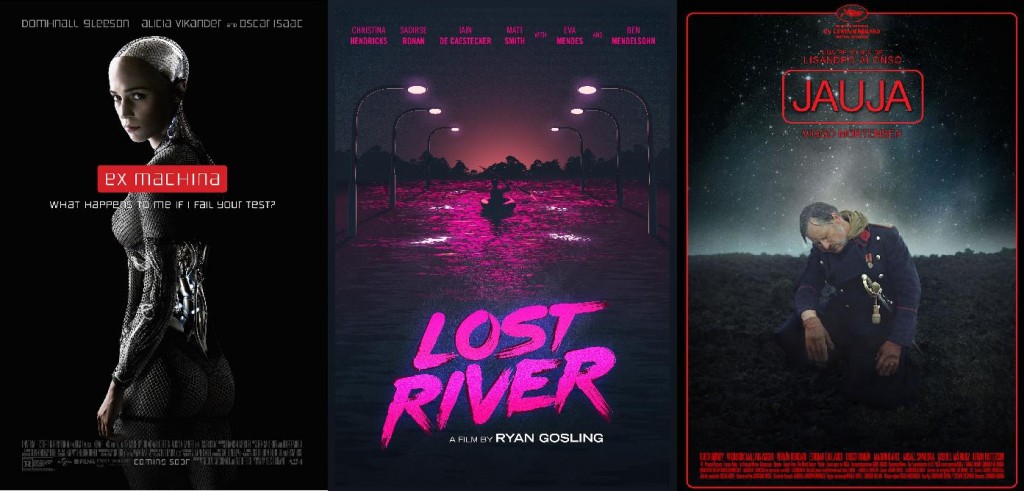
Here’s Daily Grindhouse writer Jason Coffman with a halftime top twenty for 2015! No long introductions here — just a great list of movies well worth seeing.
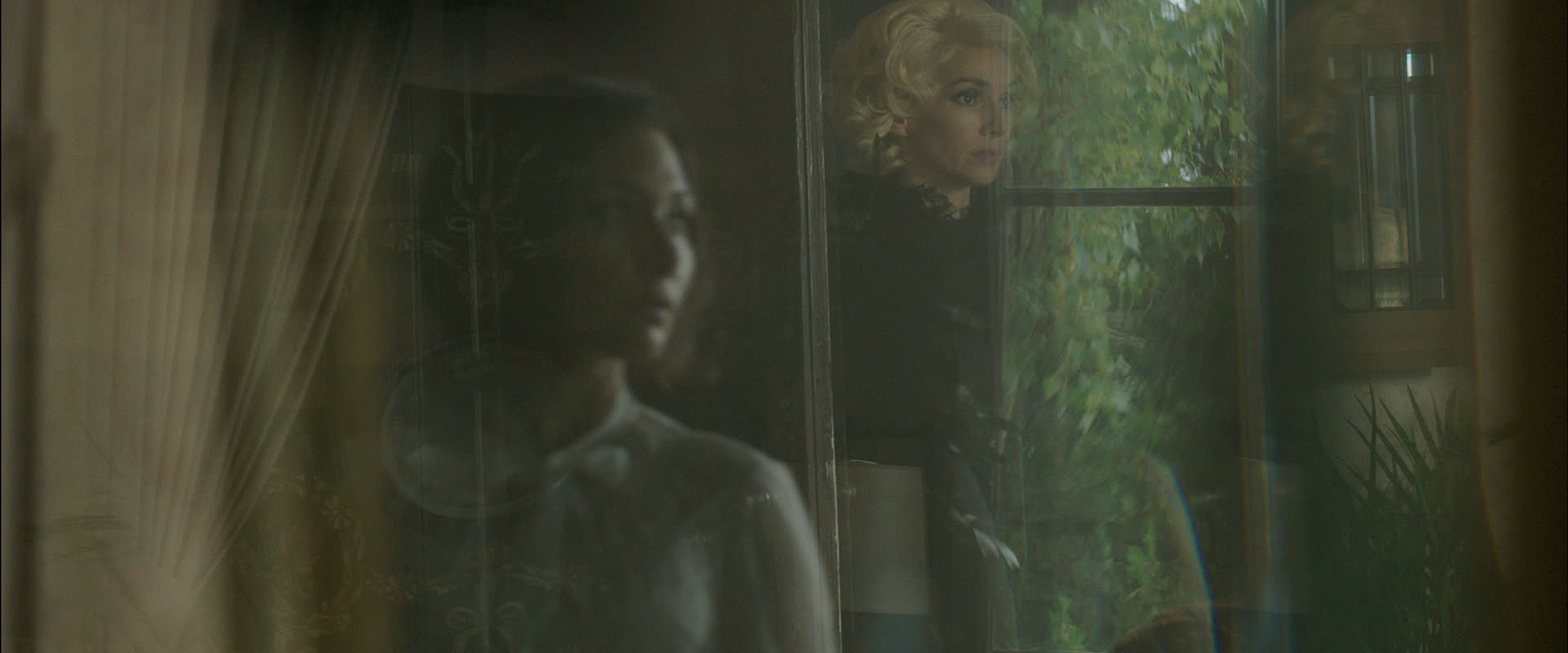
1. THE DUKE OF BURGUNDY (dir. Peter Strickland, UK)

2. INHERENT VICE (dir. Paul Thomas Anderson, USA)
Some lucky folks got to see INHERENT VICE during its brief end-of-2014 run, and so it feels like it came out ages ago and everything that could possibly be said about it has been said (and said, and said, and said, etc.). So basically I’m just going to add my voice to the chorus of approval and say that INHERENT VICE is everything I was hoping it would be when it was first announced, and then some. I love everything about this movie; I was completely hooked from the second “Vitamin C” by Can kicked in on the soundtrack, and it never stopped being that great. The main touchstone here is obviously Robert Altman’s THE LONG GOODBYE, but Paul Thomas Anderson uses his hippie detective’s descent into a weird rabbit hole of biker gangs, government agents, shady real estate deals, disappearing musicians, and crew-cut squares as both a celebration of and lament for the idealism of the ’60s.
Of course, that’s not to say that INHERENT VICE is all sad nostalgia. It’s also ridiculously, occasionally cartoonishly absurd, with a plot so labyrinthine many viewers gave up and assumed it was designed to be literally impossible to follow. Repeat watches are definitely rewarding, as every weird touch is revealed to be part of a truly mind-boggling whole. As an extra bonus, some viewers were treated to 35mm screenings of the film, which was about as close to a religious experience as I’ve ever had at the movies. The film’s warm, loose ’70s look and feel is amplified exponentially when screened from a 35mm print.
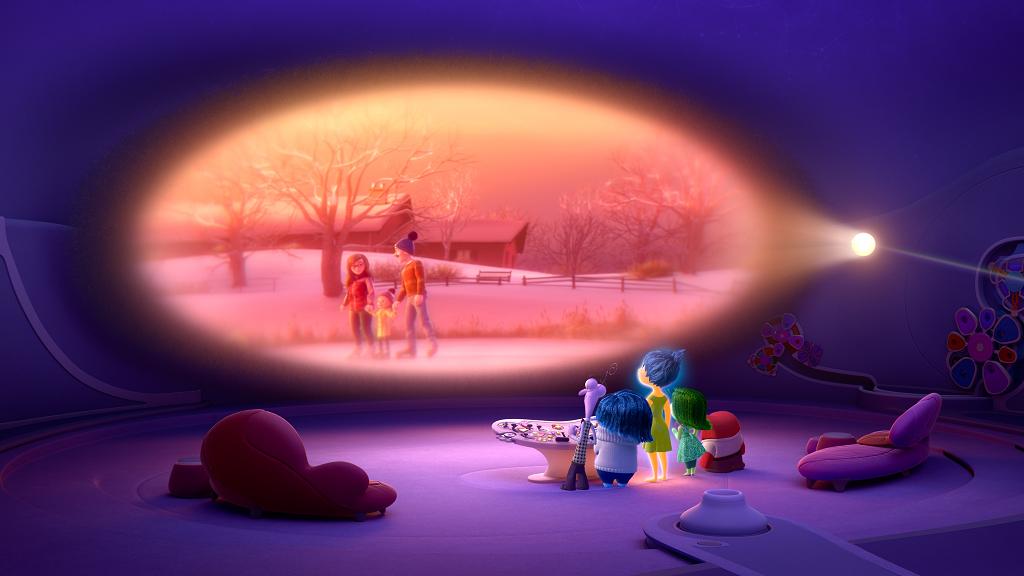
3. INSIDE OUT (dir. Pete Docter, USA)
MONSTERS, INC. has always been one of my favorite Pixar films, both because it’s funny and touching and because it climaxes with a chase so surreal and imaginative that it feels more like something out of Terry Gilliam than Disney. While Pixar’s other films have often touched on the same emotional territory and handled it well, it’s been a while since they’ve put out something as visually inventive and narratively innovative as INSIDE OUT. The film strikes a perfect balance of fun and bittersweet, acknowledging that growing up can be scary but that it’s also exciting.
Even more than this, though, is a message that it’s OK (and actually necessary) to be sad sometimes. All of this is tied up in a complex but neatly explained model of the human brain that seems influenced in equal parts by some insightful research into actual science and the intricate bureaucracy of Gilliam’s BRAZIL. It’s a beautiful return to form for Pixar after a rough last few years, and a potent reminder that when they’re at their best, nobody is better at this particular kind of big-budget CG animated feature.

4. TOKYO TRIBE (dir. Sion Sono, Japan)
To say TOKYO TRIBE is Sion Sono’s “most entertaining” film to spectacularly undersell just how insanely fun it actually is. Sono’s films have been a lot of things, but “fun” is not usually a descriptor much of anyone would ascribe to them. TOKYO TRIBE is a loud, vibrant, hilarious, bizarre explosion; nothing in even Sono’s wildly varied back catalog (with the possible exception of the finale of WHY DON’T YOU PLAY IN HELL?) has hinted he had THIS in him. The movie comes across as an amalgam of Takashi Miike’s V-Cinema gangster movies, THE WARRIORS, JET SET RADIO, and the constantly floating camera and eye-searing neon color schemes of ENTER THE VOID.

5. EX MACHINA (dir. Alex Garland, UK)
As a screenwriter, Alex Garland has been involved with some of the best genre cinema of the last 15 years, including Danny Boyle’s 28 DAYS LATER and SUNSHINE, as well as Mark Romanek’s adaptation of Kazuo Ishiguro’s NEVER LET ME GO.
EX MACHINA is his directorial debut, which seems almost impossible given how confident and accomplished it is. Caleb (Domnhall Gleeson) is a programmer working for a thinly-veiled Google stand-in called Bluebook. He wins a random drawing to spend a week at the remote home of Bluebook’s founder Nathan (Oscar Isaac). Nathan reveals that Caleb’s visit is not a vacation: provided he signs all the non-disclosure paperwork, Caleb will be participating in an experiment. Nathan has developed an advanced artificial intelligence system and placed it in a robotic body he names Ava (Alicia Vikander), and Caleb’s mission is to interact with her and report back to Nathan.
EX MACHINA wrings maximum tension from this minimal setup, and Vikander and Isaac in particular turn in great performances. The film has a cold technical precision, thanks to cinematographer Rob Hardy and some highly effective production design by Mark Digby. Garland uses the characters and their relationships to ask intriguing questions, resulting in a rare serious science fiction thriller manages to deliver intelligence and genre entertainment simultaneously.
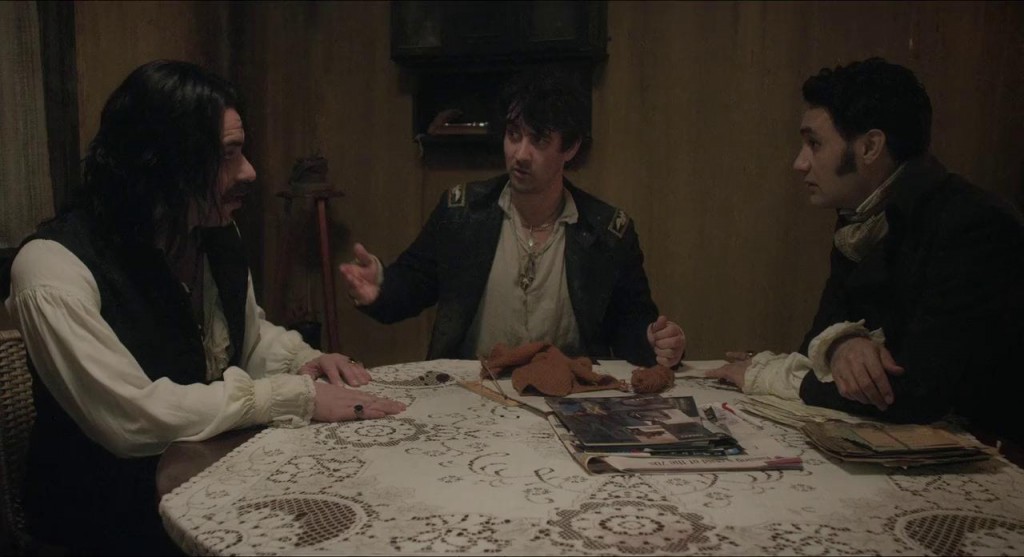
6. WHAT WE DO IN THE SHADOWS (dir. Jerome Clement & Taika Waititi, New Zealand)
Peter Jackson’s tradition of great horror/comedy from New Zealand was given a worthy successor in Gerard Johnstone’s HOUSEBOUND last year, and this year there’s another film to add to the canon. WHAT WE DO IN THE SHADOWS is presented as a documentary following several months in the lives(?) of four vampires who room together in an old house as they go about their daily routines. This naturally involves roommate disputes, but also includes dealing with familiars (humans who help provide victims for their vampire masters), werewolves (vampires’ generally polite nemeses), and the odd vampire hunter. It’s not exactly an AIRPLANE!-style spoof, but there are more solid laughs per minute of run time than any other comedy this year. I don’t think two minutes passed the entire film where I wasn’t laughing out loud.
Underlining all the goofs on vampire mythology is an undercurrent of sweetness expressed most obviously through one of the vampire’s pining for his long-lost love, living the final years of her life alone while he looks on from afar. As sweet as this is, though, WHAT WE DO IN THE SHADOWS is never too heavy or dark. It’s a perfect mix of broad comedy, clever tweaks on familiar horror tropes, and heart.
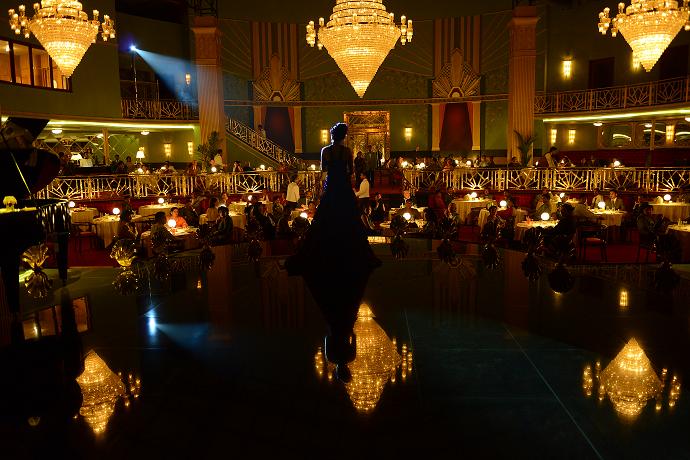
7. BOMBAY VELVET (dir. Anurag Kashyap, India)
BOMBAY VELVET opens with a title card thanking (among others) Martin Scorsese and Danny Boyle, and then proceeds to tell an epic story of love and crime in a style that would do both of those filmmakers proud. Ranbir Kapoor stars as “Johnny” Balraj, an ambitious small-time hood who is hired by gangster Khambatta (Karan Johar) to run the titular jazz club. Balraj falls for singer Rosie (Anushka Sharma), who has been sent to infiltrate the club and dig up dirt on Khambatta by her lover Jimmy Mistry (Manish Chaudhary). Rosie becomes a sensation and falls for Balraj, causing complications both professional and personal. Despite his success, Balraj remains a thug, spending his free time making extra cash by street fighting and using violence to solve any problems that come his way. As the legitimate business and the criminal enterprises both expand, it seems inevitable that Balraj will be caught in the middle when Khambatta’s empire collapses. The only question is how many others will he take down with him?
In a film industry that is defined by rigid adherence to formula, BOMBAY VELVET is a radical departure from contemporary Indian studio films. It’s a fantastic crime drama done in a very Western style, although its central setting makes its periodic song-and-dance numbers make sense in the context of the story. Everything here is top-notch, and like the best films of this type its characters are compelling even if they’re not always likable or sympathetic. This is easily the best Indian film I’ve seen this year, and even if you’re not usually interested in Indian cinema, it’s well worth a look.
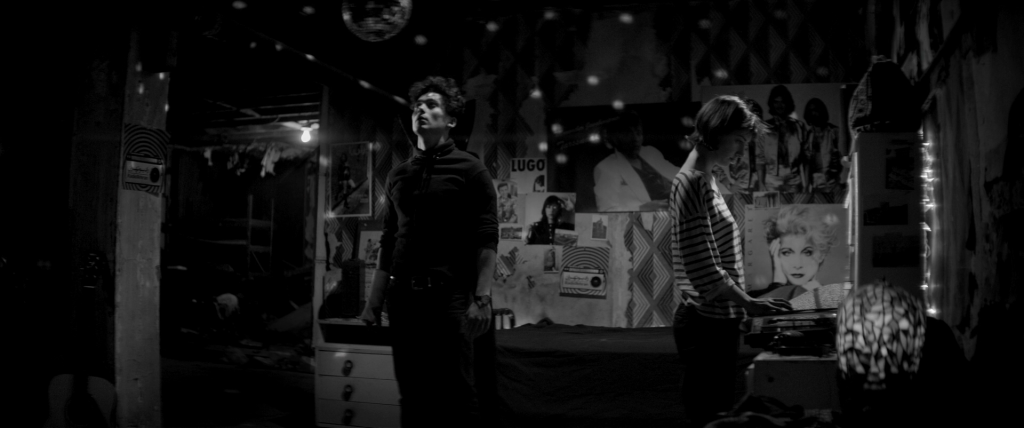
8. A GIRL WALKS HOME ALONE AT NIGHT(dir. Ana Lily Amirpour, USA)
Anyone expecting an “Iranian vampire western” (as described by the film’s marketing materials) is probably going to be utterly perplexed by A GIRL WALKS HOME ALONE AT NIGHT, which is actually a very low-key, almost plotless study of a bunch of desperate characters living in a desolate urban nightmare. One of them happens to be a vampire. The black and white cinematography is stunning, the characterization is subtle but effective, and the soundtrack is great. One of the best, most unique genre films in recent memory, calling to mind silent expressionist horror and Jim Jarmusch’s COFFEE AND CIGARETTES (with which this would make a fine double-feature) in almost equal measure.
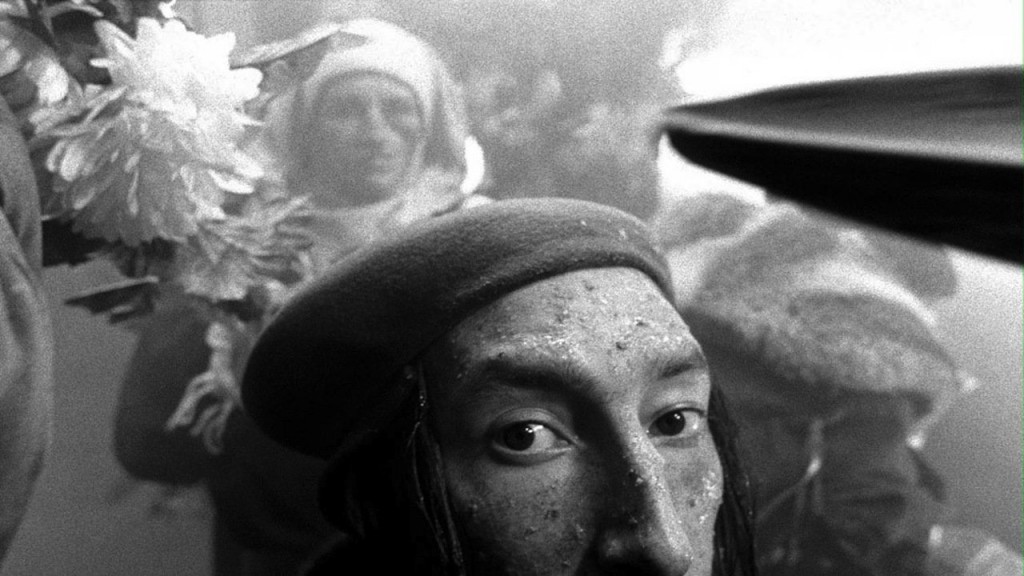
9. HARD TO BE A GOD (dir. Aleksey German, Russia)
Much has been made of the uncompromising unpleasantness of HARD TO BE A GOD, but something not many writers have touched on definitely bears mentioning: this is a hell of a lot funnier than you might be expecting. Sure, everything is miserable and everyone (and every single thing) is covered in mud and shit, but the science fiction film closest in spirit to this is probably IDIOCRACY. It feels like half the film’s running time is people blowing raspberries or turning away from the camera, bending over, and slapping their ass. The backstory is genius (the film was adapted from a novel by the authors who wrote the novel on which Tarkovsky’s STALKER is based): An inhabited planet is discovered, and a team of scientists are sent to investigate. What they find is a race of humanoids whose civilization is mired in a never-ending Dark Age. This is a world where anyone who threatens real change is strung up before they can cause too much trouble. The Earth scientists are considered gods here, and the power has gone to their heads. HARD TO BE A GOD is a long, filthy wallow in a deeply pessimistic view of humanity, but it’s also a totally convincing evocation of a period in human history that is so different from modern life it may as well actually have happened on another planet.
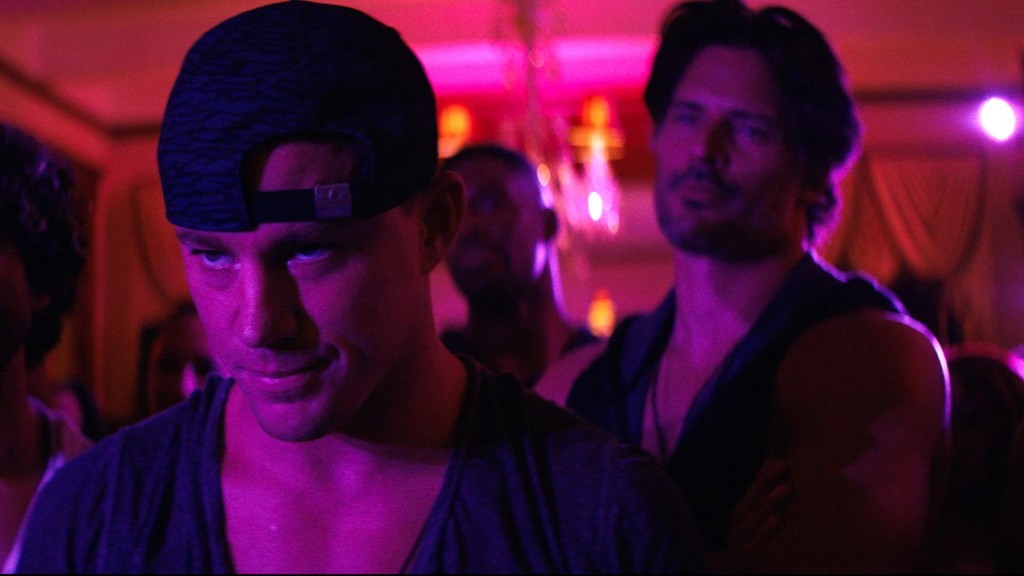
10. MAGIC MIKE XXL (dir. Gregory Jacobs, USA)
If the first MAGIC MIKE was a drama that happened to take place in the world of “male entertainers,” MAGIC MIKE XXL is a “male entertainer” movie that happens to have some light drama thrown in to give its hilarious, insanely fun dance sequences a little breathing room. Although actually, the opening of the film gives the viewer maybe a little too much breathing room. MAGIC MIKE XXL feels like it takes forever to get started, but once it’s up and running for its second half, it’s all payoff. And what a payoff! Channing Tatum is top billed, but Joe Manganiello and (especially) Jada-Pinkett Smith steal the show. Other than Pinkett-Smith, the most impressive addition to the cast this time around is Stephen “Twitch” Boss, veteran of the STEP UP films and a longtime fixture on SO YOU THINK YOU CAN DANCE. Boss is a spectacular dancer, and has one amazing solo dance and shares the climactic final dance number with Tatum. This is just about the most fun you can legally have at the movies.
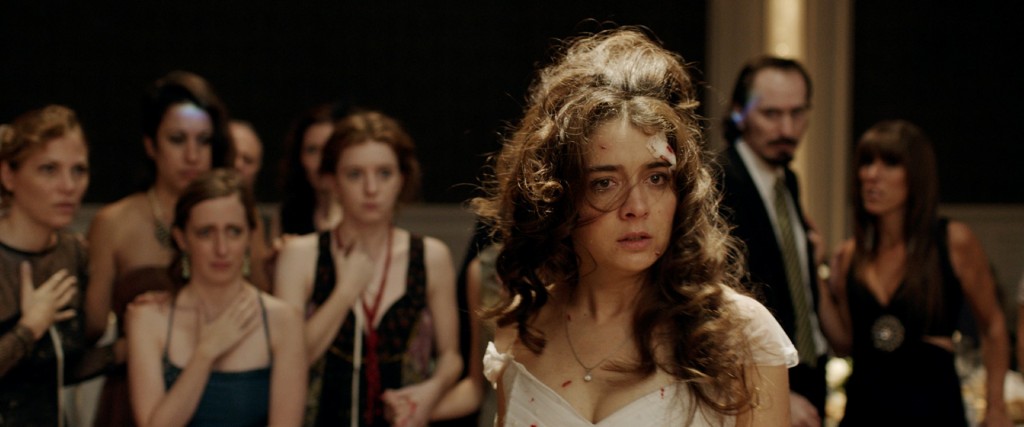
11. WILD TALES (dir. Damián Szifrón, Spain)
Knowing that Pedro Almodóvar is a producer on Damián Szifrón’s appropriately-titled WILD TALES might help prepare you for what you’re about to watch, an anthology of short stories touching on the subject of revenge. But far from the typical dark take on the subject found in many films, WILD TALES is a frequently hysterical comedy, examining the consequences of payback given outrageously disproportionate to the original wrong(s). As with any anthology, some segments are stronger than others, but the opening sequence and the closing one are so funny and bizarre that they would make the entire film worth watching by themselves. Fortunately, there’s plenty more to like here, all tinged with a sense of humor clearly influenced by Almodovár’s work. It’s kind of amazing that WILD TALES was nominated for Best Foreign Language Film at the Academy Awards this year, as it’s a world away from the straight-faced and comparatively sedate competition of the other nominated films. Most U.S. audiences didn’t get a chance to see WILD TALES until 2015 during a post-Awards theatrical run, and hopefully it will continue to find an audience as it hits home video.
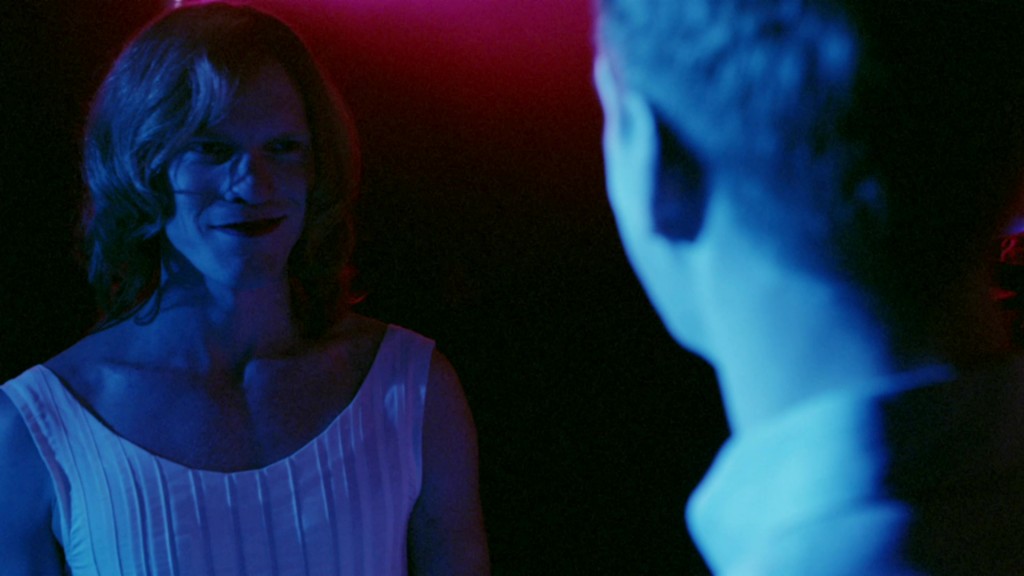
12. DER SAMURAI (dir. Till Kleinert, Germany)
Till Kleinert’s debut feature DER SAMURAI is deceptively slight, running a little over 70 minutes. But Kleinert makes expert use of that time, jamming it full of psychosexual weirdness and capping things off with a shot that’s frankly one of the most astonishing I’ve seen in any film this year. Michael Dierks plays Jakob, a young police officer in a tiny town who has recently been trying to prevent a wolf from bothering the townsfolk by hanging bags of raw meat out in the surrounding forest. He takes care of his senile grandmother and doesn’t command much respect, but it’s a living.
One day a package arrives at police headquarters, and later someone calls and directs him to an abandoned house in the woods to deliver it. There Jakob finds a man (Pit Bukowski, all grinning wild energy) wearing a long white slip and carefully applying lipstick. “The Samurai” takes the sword and sets off on a rampage across the town while Jakob tries to prevent as much destruction as possible during a long, bizarre night. DER SAMURAI takes stylistic cues from David Lynch and John Waters, with a hint of Park Chan-wook, and typical of first features Kleinert is willing to take big risks that mostly pay off in creating a unique vision and tone. The film repeatedly sets up expectations only to gleefully confound them, and it leaves the viewer with plenty to chew on afterward.
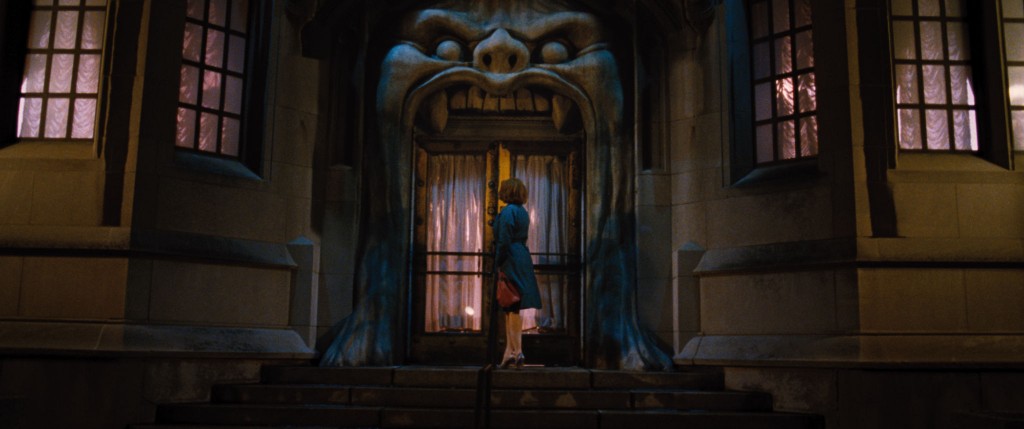
13. LOST RIVER (dir. Ryan Gosling, USA)
LOST RIVER can be summed up as an exercise in which its writer/director pays direct, obvious homage to his influences and indulges in his obsessions with his debut feature, and since most of those influences and obsessions align very closely with my own, I enjoyed the film quite a bit. Honestly, I think the only reason this film has received such a critical hammering is probably that its writer/director happens to be Ryan Gosling, a successful and well-liked actor. There are some real problems with the film, but it looks incredible (no surprise, since the cinematographer on it was Benoît Debie) and features many striking images, the cast is great (especially Christina Hendricks), and the soundtrack by Johnny Jewel is fantastic. Also, it’s not hard to imagine young cinephiles seeing this movie and having their minds completely blown and being led to the works to which Gosling pays tribute. Any film that might lead some kid watching great cinema they might not have discovered sooner otherwise is a worthwhile one. Hopefully Gosling gets another shot at directing, because LOST RIVER shows a lot of promise despite its problems.
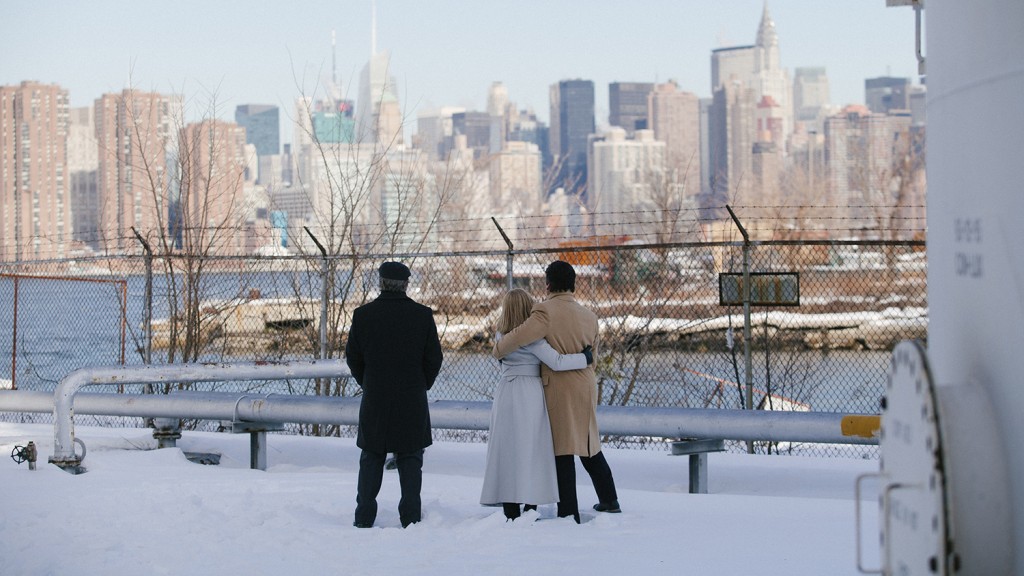
14. A MOST VIOLENT YEAR (dir. J.C. Chandor, USA)
On paper, A MOST VIOLENT YEAR sounds insanely boring. It’s 1981 New York, and Abel Morales (Oscar Isaac) wants to expand his heating oil business by purchasing a large distribution center in a high-stakes deal with its current owners. Abel puts up $1 million of his own money and must pay the remaining $1.5 million in one month to finalize the purchase, but his truck drivers have been attacked and a number of his oil shipments stolen. This has put a serious dent in his profits, and in the midst of this already intensely stressful situation the district attorney begins an aggressive investigation into Abel’s business practices. Abel’s not too worried at first, but his wife Anna (Jessica Chastain) seems to believe the situation is more complicated than Abel might think. With the clock ticking on his real-estate deal, the DA breathing down his neck, and his competitors moving in to take advantage of his weak position, Abel struggles to stay afloat during the most volatile month of his life.
In the hands of director J.C. Chandor and the stellar cast, A MOST VIOLENT YEAR is a compelling and tense drama marked by two excellent lead performances from Isaac and Chastain and a small but pivotal supporting role for Albert Brooks as Abel’s lawyer. Cinematographer Bradford Young gives the film a distinct look that has the quality of an old photograph, and Jessica Chastain’s vintage Armani wardrobe would make the film worth watching alone.

15. THE CREEPING GARDEN (dir. Tim Grabham & Jasper Sharp, UK)
Obsession frequently makes for compelling documentary material, and when a shared obsession is as utterly strange as the slime mold, it may seem like a big part of a filmmaker’s job is already done for them. Fortunately, co-directors Tim Grabham and Jasper Sharp are keen on digging into the outer limits of their subject and present their film beautifully. Slime molds are a fascinating life form, neither plant nor animal, and the people profiled in the film approach the study of the slime mold from a number of unexpected and imaginative angles. There’s straight science, of course, but there are also artists using the slime molds as “collaborators,” and the film’s mix of different worlds is its biggest strength. The evocative ambient score by Jim O’Rourke and Woob and some stunning time-lapse photography all help make THE CREEPING GARDEN one of the most unique and entertaining documentaries of the year.
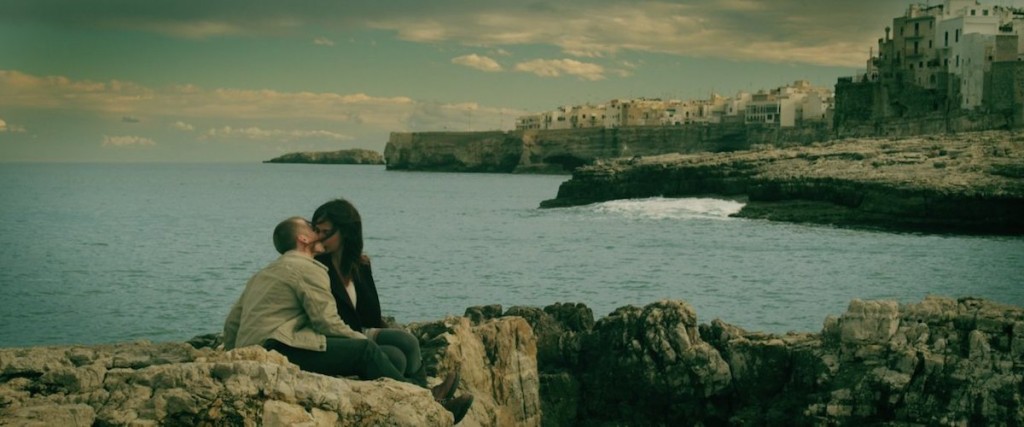
16. SPRING (dir. Justin Benson & Aaron Moorhead, USA)
Benson & Moorhead’s follow-up to RESOLUTION is a vastly different beast in terms of tone and scope, although it thankfully expands a bit on their sense of humor (gleefully on full display in “Bonestorm,” their segment in V/H/S: VIRAL) while retaining the thoughtful focus on character that defined their debut. Some of the digital effects are wonky enough to be distracting, but thankfully the film is compelling enough to mostly smooth over such rough edges. That’s mostly due to Lou Taylor Pucci and Nadia Hilker, who both give solid performances and have a great, easy chemistry together. Funny, smart, and romantic, which are three things horror movies almost never are simultaneously.

17. JAUJA (dir. Lisandro Alonso, Argentina)
One of the most perversely enjoyable things about Lisandro Alonso’s gorgeous JAUJA is how the director purposely denies the viewer the wide vistas the film’s locations promise. Presented in a rough 4:3 frame with rounded corners, JAUJA is an undeniably beautiful film, and the fact that there is so much more outside the frame gives it a frustrating, tantalizing quality matched by its dreamlike approach to narrative. At some undetermined point in the past, Gunnar (Viggo Mortensen) and his daughter Ingeborg (Viilbjørk Malling Agger) have traveled to an unspoiled land from Denmark. They are being escorted to a village by an army detail, and one night Ingeborg flees their camp with a young soldier. Gunnar sets off across the unfamiliar plains to find her, and that is basically the entire story.
Long passages of JAUJA pass with no dialogue, and only two pieces of music punctuate the silence. Gunnar’s search becomes stranger as he ventures further afield, his frantic search placed in stark contrast to the serene landscape of this unknown country. JAUJA is hypnotic and quietly surreal, a film that deceptively lulls the audience into its spell and refusing to provide answers to its mysteries.
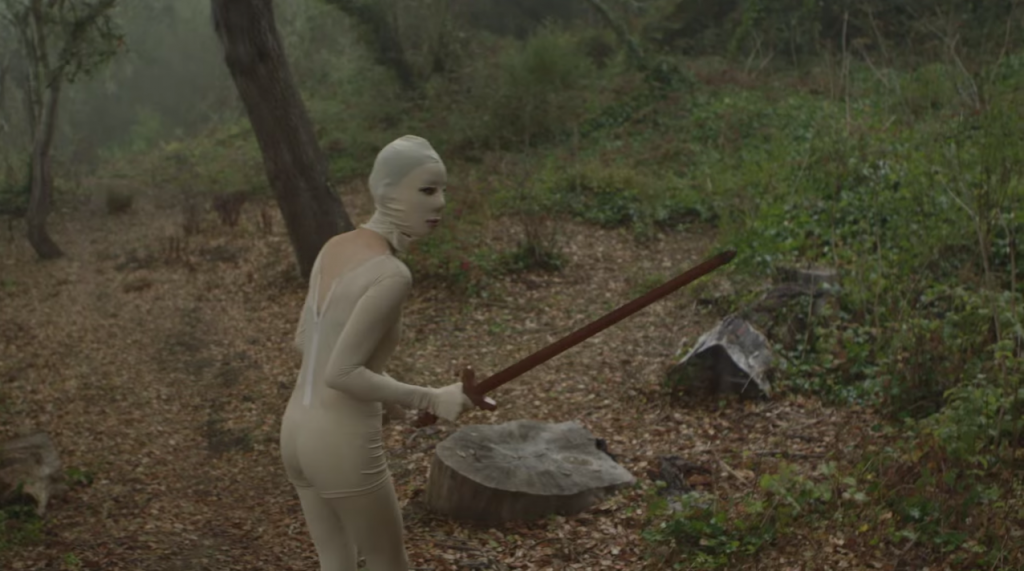
18. FELT (dir. Jason Banker, USA)
As with most films, viewers should go in to FELT knowing as little as possible. Even discussing it as a genre film flirts with spoiling its surprises, but ultimately FELT belongs to the sort of female-led psychological horror films of 1970s like THE WITCH WHO CAME FROM THE SEA. Amy Everson plays Amy, an artist living in Los Angeles who has suffered some kind of traumatic event before the action of the film begins. What exactly this event was is never directly addressed, but Amy’s increasingly unhinged behavior hints strongly at a sexual assault. She does not seem to have told anyone about it, as her friends seem completely blindsided by her sudden change in personality. She begins dressing up in a “superhero” costume as a character with no face, a big penis, and a sword. spending her days wandering around in a wooded area and isolating herself from her friends.
FELT immerses the audience in Amy’s world, and makes her retreat from the real world seem like a completely reasonable reaction to the horrible men she has to deal with on a daily basis. FELT is not without moments of humor, but mostly it is overwhelmingly bleak, and confrontational in a way that few films (genre or otherwise) are willing or able to be.

19. SPY (dir. Paul Feig, USA)
After BRIDESMAIDS and THE HEAT, I was both looking forward to SPY and somewhat concerned. Melissa McCarthy is a great comedian, but her coarse, foul-mouthed characters in those two films felt a little too similar. Fortunately, McCarthy is in a much different mode for much of SPY, bringing a welcome sweetness to her character. Susan Cooper (McCarthy) is the assistant to superspy Bradley Fine (Jude Law, paradoxically playing a James Bond type with an American accent), helping him pull off all that cool spy stuff by monitoring his situation via satellite and advising on the best course of action. When Rayna Boyanov (Rose Byrne), the daughter of a notorious arms dealer, somehow learns the identity of all of the CIA’s top field operatives, Cooper is sent into the field to track and report on Boyanov to prevent a nuclear weapon from falling into the hands of terrorists.
The most refreshing aspect of SPY is that Cooper is never treated like a punchline because she doesn’t match up with the audience’s expectation of a glamorous spy, but instead is a smart, highly competent agent who gets the job done despite constant interference from an annoying rogue agent (Jason Statham, hilariously sending up his typical screen persona). The cast is fantastic and everyone seems to be having a great time, and it’s infectious. Pretty easily the best major studio comedy of the year so far, and it doesn’t look like there’s a hell of a lot of competition in that category on the horizon.

20. RESULTS (dir. Andrew Bujalski, USA)
Andrew Bujalski’s COMPUTER CHESS was one of my favorite films of 2013, a spectacularly unique low-key hang-out movie that used obsolete video technology to create a highly convincing early-1980s period atmosphere. RESULTS shares that film’s loose feel, and seems less structured and more overtly comedic. These aren’t complaints, though: RESULTS is still a long way from conventional modern “romantic comedy.” Cobie Smulders plays Kat, a high-strung trainer at an Austin gym run by the relentlessly positive Trevor (Guy Pearce). Their lives become a little complicated with the arrival of Danny (Kevin Corrigan), a newly-rich out-of-towner who wanders into the gym more looking for something to fill up his limitless free time than any real desire to get into shape.
This plot summary sets up expectations that RESULTS handily subverts and avoids, wandering off (sometimes aimlessly) in a number of unexpected directions. The real pleasure of the film is in its leads’ excellent characterizations; it’s a genuinely good time hanging out with these people, and if the movie feels a little long that can be easily forgiven. If the audience feels so warmly towards these characters after an hour and half, imagine how attached Bujalski must have been to them.

— JASON COFFMAN.
- [CINEPOCALYPSE 2017] FIVE FILMS YOU CAN’T MISS AT CINEPOCALYPSE! - October 31, 2017
- Hop into Jason’s Ride for a Look at the Wild World of Vansploitation! - August 11, 2014
Tags: Aaron Moorhead, Albert Brooks, Aleksey German, Alex Garland, Alicia Vikander, Ana Lily Amirpour, Argentina, Benoît Debie, Bradford Young, channing tatum, Christina Hendricks, Damián Szifrón, Danny Boyle, David Lynch, Germany, Gregory Jacobs, Guy Pearce, Horror, India, J.C. Chandor, Jada Pinkett Smith, japan, Jason Statham, Jean Rollin, Jemaine Clement, jess franco, Jessica Chastain, jim jarmusch, Joe Manganiello, john waters, Johnny Jewel, Jude Law, Justin Benson, Kazuo Ishiguro, Kevin Corrigan, Lisandro Alonso, Lists, Lou Taylor Pucci, Mark Romanek, Martin Scorsese, Melissa McCarthy, Nadia Hilker, New Zealand, park chan wook, Paul Feig, Paul Thomas Anderson, Pete Docter, Peter Strickland, Robert Altman, Rose Byrne, Russia, Ryan Gosling, Samurai, Sion Sono, Spain, Taika Waititi, Takashi Miike, Terry Gilliam, Till Kleinert, vampires, Viggo Mortensen, Werewolves, Wolves

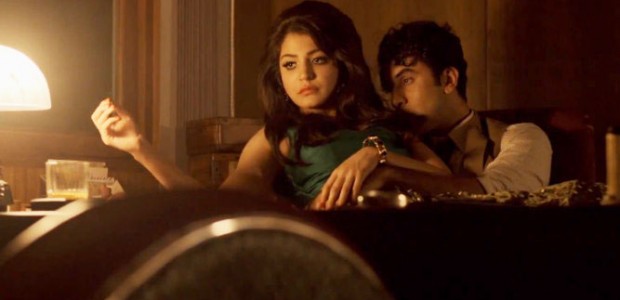


No Comments